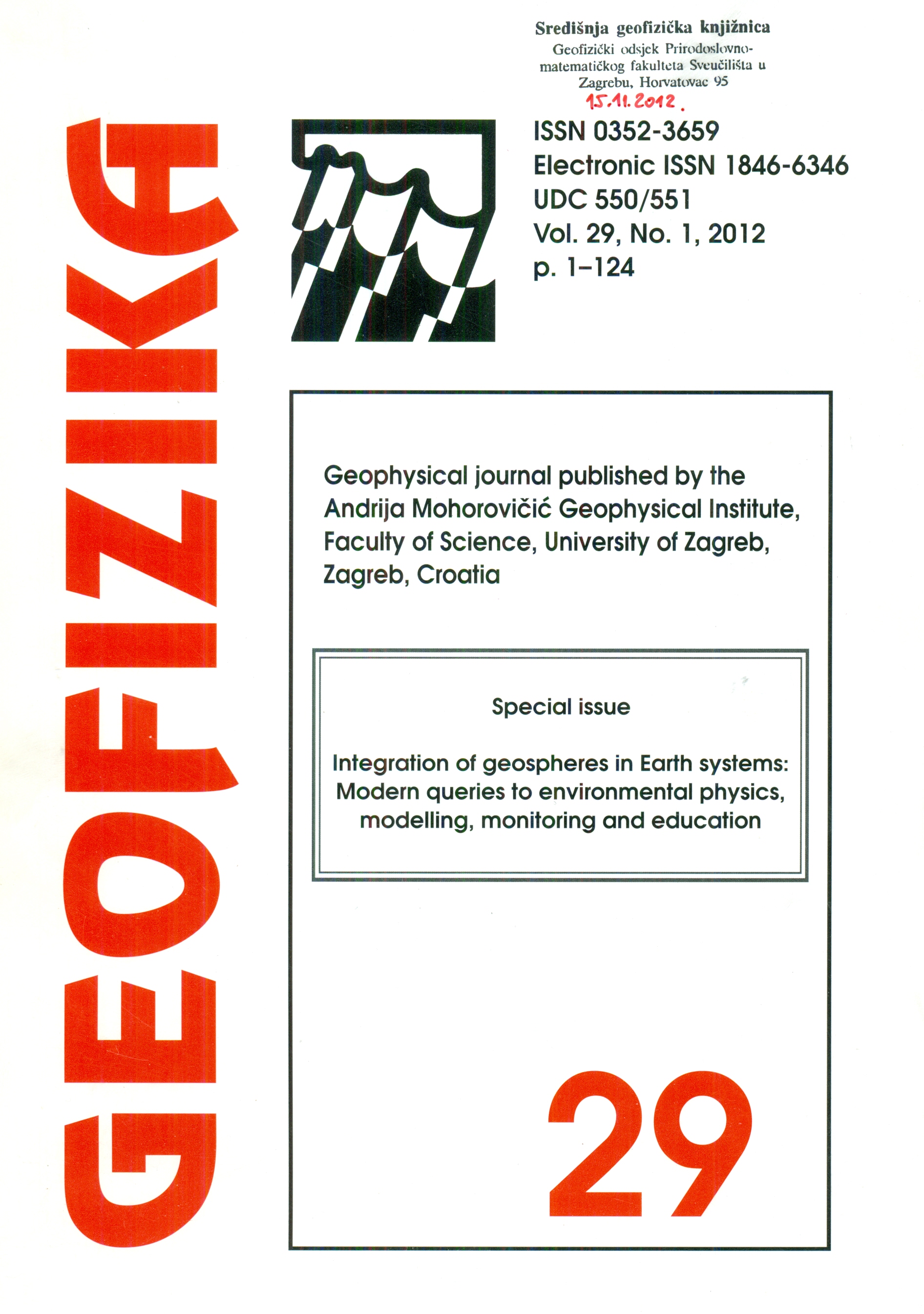The influence of meteorological conditions and weak to moderate traffic density on PM1 levels in a residential area of Zagreb, Croatia.
Keywords:
advection of particles, ambient concentrations, DUSTTRAKTM Aerosol Monitor, traffic density, 1-min meanAbstract
The levels of 1-min mean ambient particles with an aerodynamic diameter up to 1 µm (PM1) recorded at two nearby measuring sites in a residential area of Zagreb, Croatia, were analyzed with respect to the meteorological conditions (air pressure, horizontal and vertical wind speed, wind direction, global radiation, air temperature and relative humidity) and local traffic. PM1 mass concentrations were measured using a Model 8520 DUSTTRAKTM Aerosol Monitor (TSI Inc., Shoreview, MN, USA). One measuring site was placed next to a road with weak to moderate traffic, and the other was on a roof terrace approximately 100 m east of that road; the heights of the aerosol monitor inlet were at 1.7 m (road) and 15.8 m (roof) above the ground level (AGL). Both road and the roof experiments were performed by the same instrument, and thus, they correspond to different time intervals. The roof results show that nearby roads do not affect the PM1 concentrations at the site 100 m from the road, while, according to preliminary road results, the effects of the local traffic appear only if more than 22 vehicles per minute pass by the instrument. However, PM1 levels seem to be strongly affected by traffic occurring in the more distant areas of Zagreb. Additionally, the results for certain wind directions also exhibit the influence of the regional and/or long-range transport of pollution on PM1 levels. Finally, it is shown that 1-min mean PM1 mass concentrations depend on the 1-min mean meteorological variables investigated.
Downloads
Published
Issue
Section
License
Copyright (c) 2021 Geofizika journal

This work is licensed under a Creative Commons Attribution-NonCommercial 4.0 International License.

